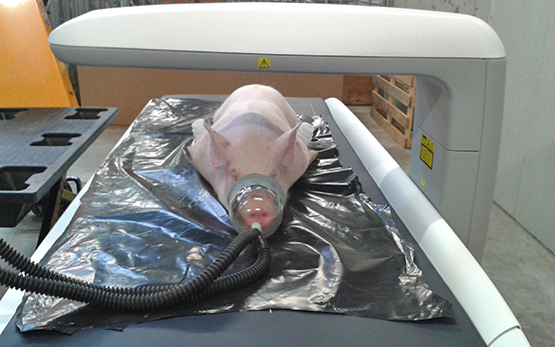Measuring body composition and bone density with X-rays
Agroscope recently acquired a dual-energy X-ray absorptiometry device (DXA). This device was originally developed for human medicine, for the early detection of osteoporosis. The technology is non-invasive, thus enabling the measurement of total body composition on the living animal, in order to follow growth. Currently being used in a research project on protein nutrition, the DXA device can also be used to measure bone density, thereby providing important information on mineral (i.e. calcium and phosphorus) nutrition.
Several models based on the total body composition of fattening pigs and at present used to define feeding recommendations date from 30 years ago. Since then, both the fattening pigs and their diet have changed considerably. The animals are substantially fleshier today than in the past. The future revision of feed recommendations is intended to take this development into account.






